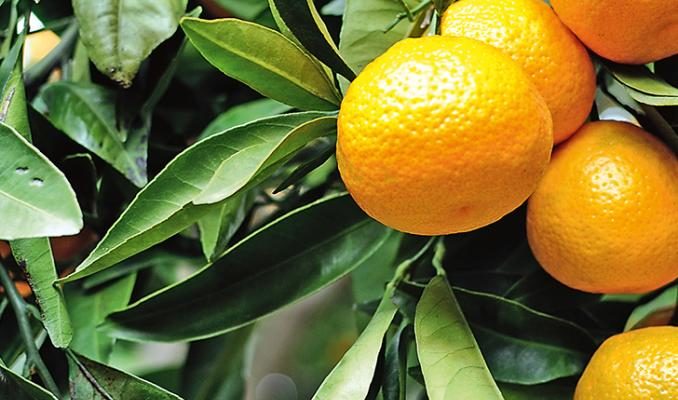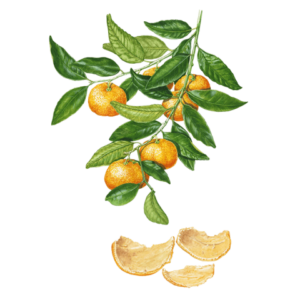
Find out more about the Mandarin plant of our Aromatherapy Herbarium blog series.

MANDARIN
Citrus reticulata
DESCRIPTION

Mandarin (Citrus reticulata) is a small tree of the Rutaceae family, with lustrous leaves, native to South East Asia (China and Vietnam).
ADVICE
Mandarin essence must not be used before exposure to the sun as it is phototoxic.
DO NOT USE IN
– pregnant or breast-feeding women,
– children under the age of three years,
– persons allergic to one of the components (aldehydes, limonene),
– subjects with asthma without the advice of an allergologist before the first use,
– over a long period in persons with functional kidney failure (monoterpenes).
Warning! There is a risk of drug interference it the use exceeds more than a few days.
RECIPES
Anxiety (adults and children)
Take 1 to 2 drops of mandarin essence on a neutral tablet, a sugar lump or a spoonful of honey and allow to melt in the mouth. Repeat as necessary.
Sleep disturbance
4 drops of EO of bitter orange petit grain, 4 drops of mandarin essence. Diffuse the mixture in the room for an hour before going to bed.
Place a few drops of mandarin essence on the pillow or on a handkerchief.
4 drops of EO of basil, 4 drops of EO of bergamot, 4 drops of mandarin essence, 4 drops of sweet orange essence.
Mix the essential oils in a tablespoon of neutral base for the bath or powdered milk. Pour in a hot bath. Stay in the bath for twenty minutes, then go to bed without rinsing. Continue the treatment for fifteen days.

Its fruit, with a sweet and aromatic flesh, is one of the least acid citrus fruits and contains many seeds (unlike a clementine). It is divided in about ten quarters sometimes called “pigs”. The species called “satsuma” (Citrus unshiu), called mikan in Japan, has two hundred cultivars. One of the best known is owari, whose fruit ripens in winter in the Northern hemisphere.
Is the name of the mandarin derived from the yellow coat of mandarins? That’s what they say. However, it is certain that it has been known in China since thousand of years. The peel of a mandarin was? and still used ripe (chen pi) or unripe (ging pi) to treat stomach problems and gastric disorders. In the south of China, mandarins are given in the as presents in the New Year and if you receive you are supposed to give back two so as not to confiscate all good fortune. Mandarin trees arrived in Europe and America more than four hundred years after the orange tree. Great Britain imported the first trees in 1815; Provence did not see them before the beginning of the 19th century. They were cultivated in Algeria from 1850.
CULTIVATION AND PRODUCTION
Outside its Chinese base, mandarin trees are mainly cultivated in the Maghreb, Spain, the United States and Mexico. China produces almost half of the world production of mandarins, followed by Spain (approximately 10%). France has an insignificant production and imported four hundred twenty tonnes in 2010 and prefers clementines (nearly thirty four thousand tonnes).
FRAGRANCE
The fragrance of mandarin essence is refreshing, sweet and fruity.
EXTRACTION AND YIELD
Essence of mandarin is obtained by cold expression of the peel, with a yield of 0.8% to 1.2%, i.e. eight hundred grams to a kilogram two hundred grams of essential oil per hundred kilograms of plant. The essential oil obtained is red, yellow or green depending on the maturity of the fruit. The essential oil obtained by distillation of mandarin tree leaves gives essential oil of mandarin petit grain.
CHEMICAL FORMULA
The main constituents of mandarin essence are monoterpenes (limonene, 75% to 85%, gamma-terpinenes, approximately 10%), monoterpenols (linalool, alpha-terpineol), esters and aldehydes (decanal).
MAIN INDICATIONS
Essential oil of mandarin petit grain is anti-nausea, relaxant, sedative and slightly hypnotic. It moderates the central nervous system and reduces insomnia as well as anxiety. Mandarin essence fights against dyspepsia and gastralgia. (It also fights effectively sleep disorders in children as well as skin ageing).


Leave a Comment